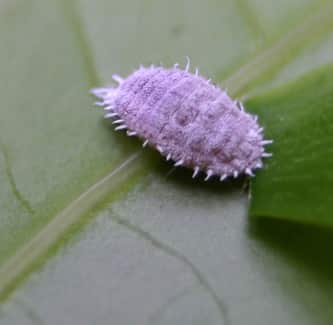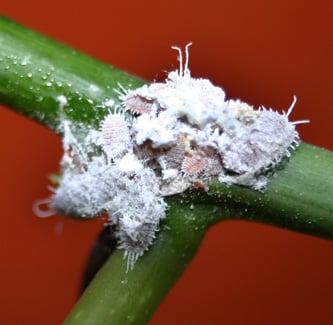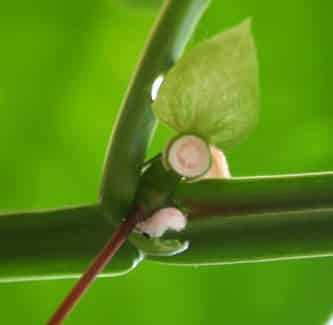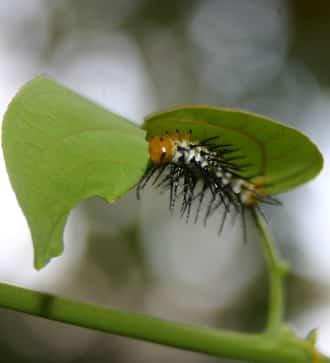Harmful animals (pests)




Young Heliconius charitonia larva eating leaf of Passiflora platyloba at Copenhagen Botanical Garden.
In nature, passion flowers are subjected to different pests, viruses, bacteria-, and fungal diseases, but the species react very differently. Some are resistant to certain pests while others are susceptible. However, many of the natural enemies do not follow when the Passiflora species are grown in temperate countries. Dependent on the species one can get problems with spider mites, trips, snout beetles, white flies, and mealybugs. Most of these bugs can be rubbed, rinsed off or washes off, but it has to be done immediately after the problem occurs. Mealybugs are able to reproduce and spread in a very short time. They often hide under bracts and stipules and they manage to spread widely before the colonies get so large that they are visible outside the stipules. However, the characteristic tuft of wool containing eggs and larvae may be placed anywhere on the plant including the coils formed by tendrils and also on climbing frames, edges of pots and similar. It may be necessary to use an insect agent such as Provada or Ecostyle. However, these may not be available and they are not particularly effective. You can prepare a 70% isopropyl alcohol with a drop of unscented dishwashing liquid added and use a spray bottle. It will kill the beasts immediately. Many butterflies, primarily the genus Heliconius, lay eggs on the leaves or other parts of the plants and their larvae feed on the leaves. See more under butterfly forage plants.
H. S, Heide-Jørgensen, March 2011.
Return to Passiflora main page

